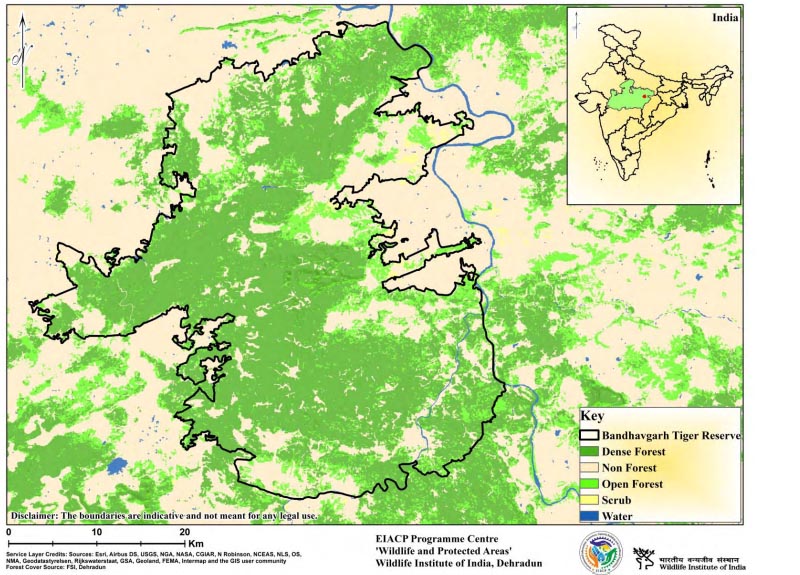Bandhavgarh Tiger Reserve
General Info Bandhavgarh Tiger Reserve
Bandhavgarh Tiger Reserve is named after the Bandhavgarh hill (807 m) lying in the center of the Reserve. The Tiger Reserve falls between the Vindhyan hill range and the eastern flank of the Satpura hill range and is located in the Umaria and Katni districts of Madhya Pradesh. A chain of smaller hills, 32 in all, forms several valleys and spurs interspersed with low-lying areas, such as Chakradhara, Rajbahera, Sehra-Dadra, Bhitri bah, Kolua bah, etc. Rivers Johilla and Son flow on the boundary on the eastern side, river Umrar passes through the western fringes and the Bandhavgarh hill, visible from as far as 30 km, are some landmarks of the Reserve. The Reserve includes Bandhavgarh National Park and Panpatha Wildlife Sanctuary. Bandhavgarh has been an excellent habitat for tigers and is known for its high density of tigers. There are several artificial caves in Bandhavgarh with inscriptions and carvings dating back between about 129- 168 A.D. The habitat also has several archeological monuments. Statues of various incarnations of Lord Vishnu, which were carved out of a single rock, are found in the fort. "Sheshshaiya" the statue of Lord Vishnu in reclining pose, is the biggest of all and attracts many tourists. Bandhavgarh Tiger Reserve's vegetation is categorized into five types (Champion & Seth, 1968): the moist peninsular low-level Sal forest, northern dry mixed deciduous forest, dry deciduous scrub, dry grassland, and West Gangetic moist mixed deciduous forest.
Description
State : Madhya Pradesh
District : Umaria and Katni
Coordinates : 23°27’ N, 80°44’ E
Area : 1,536.93 Sq.km.
TR Notification year : 1993-1994
Tiger Population : 104 (All India Tiger Esitmation, 2018)
